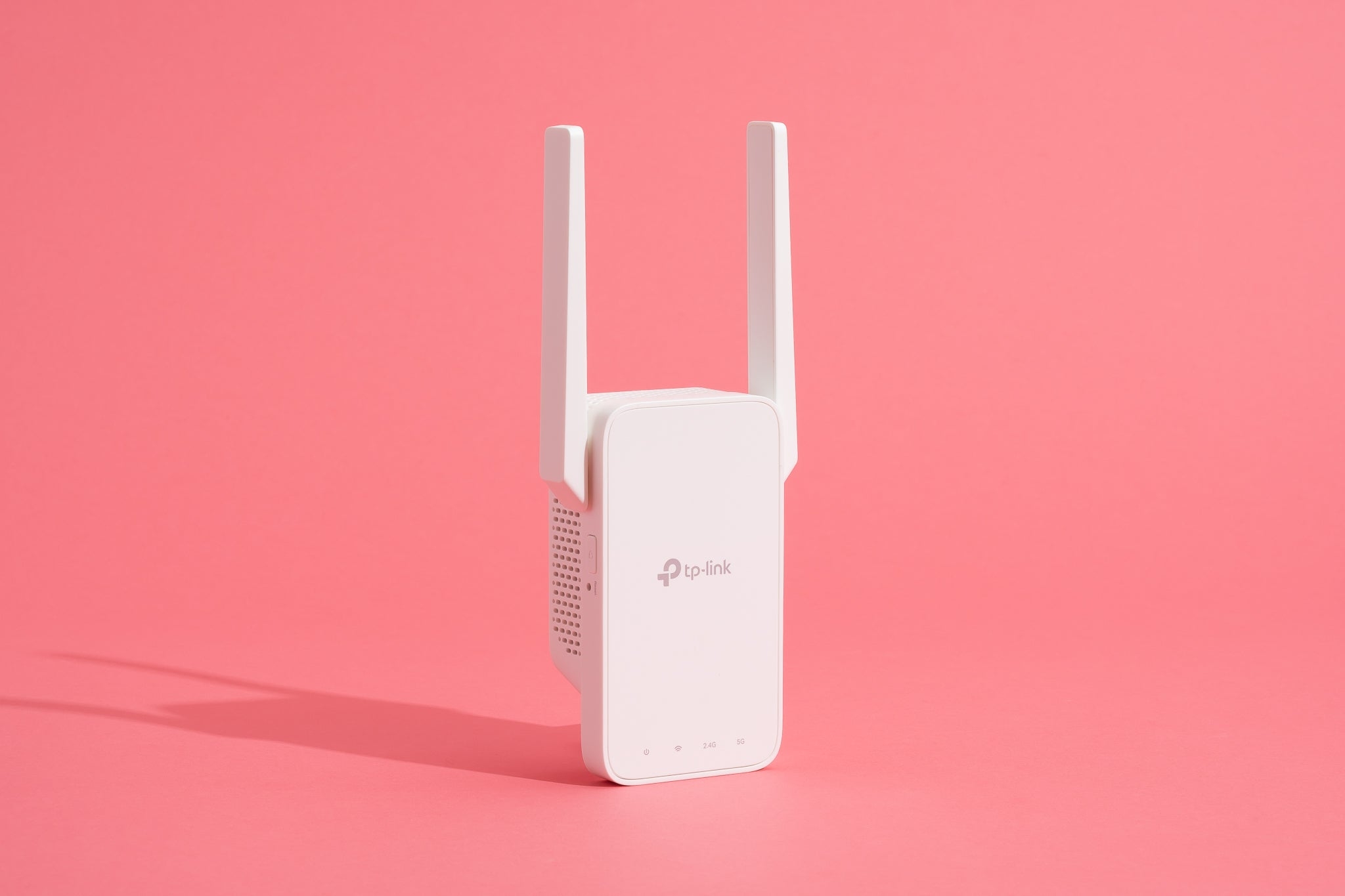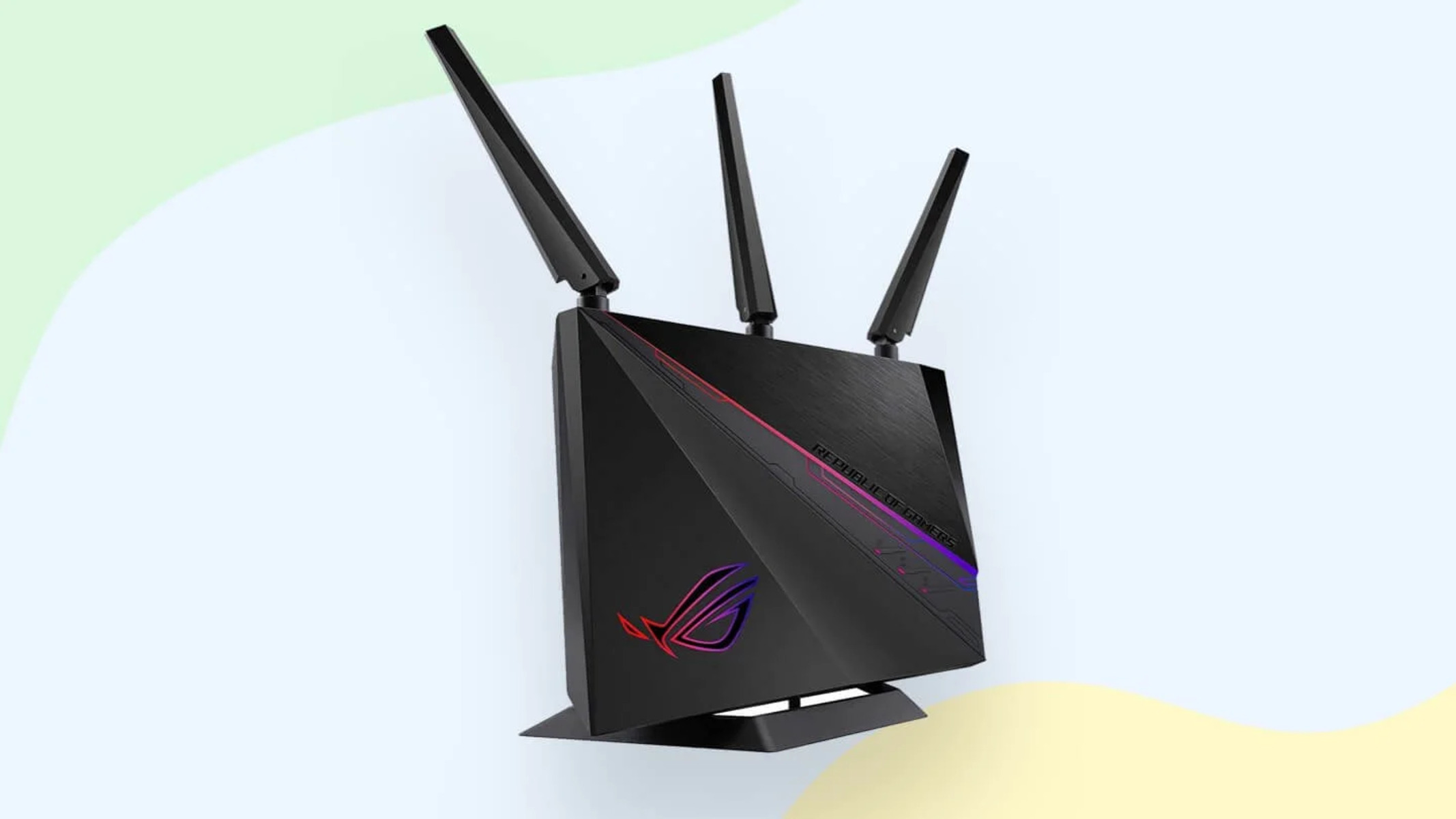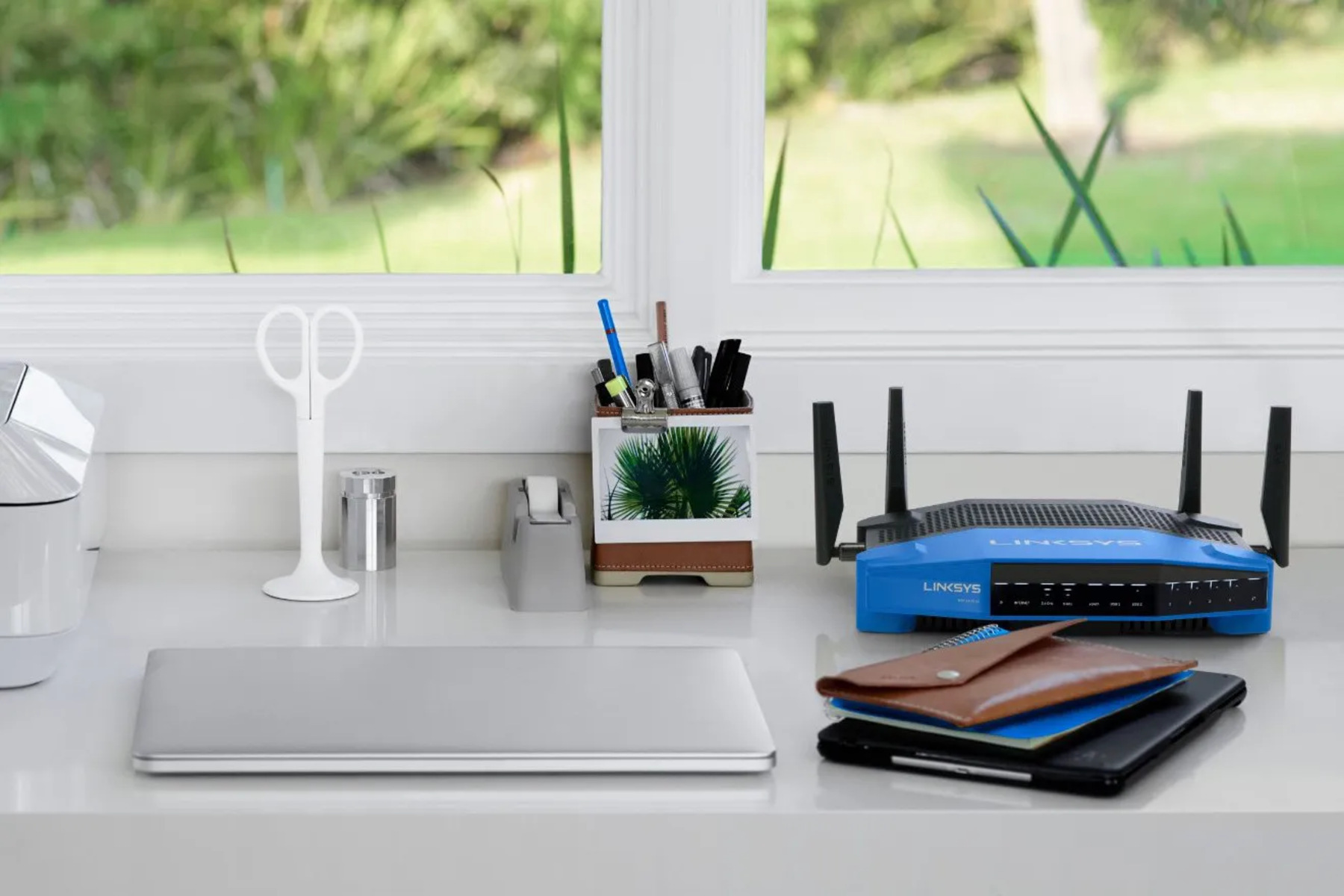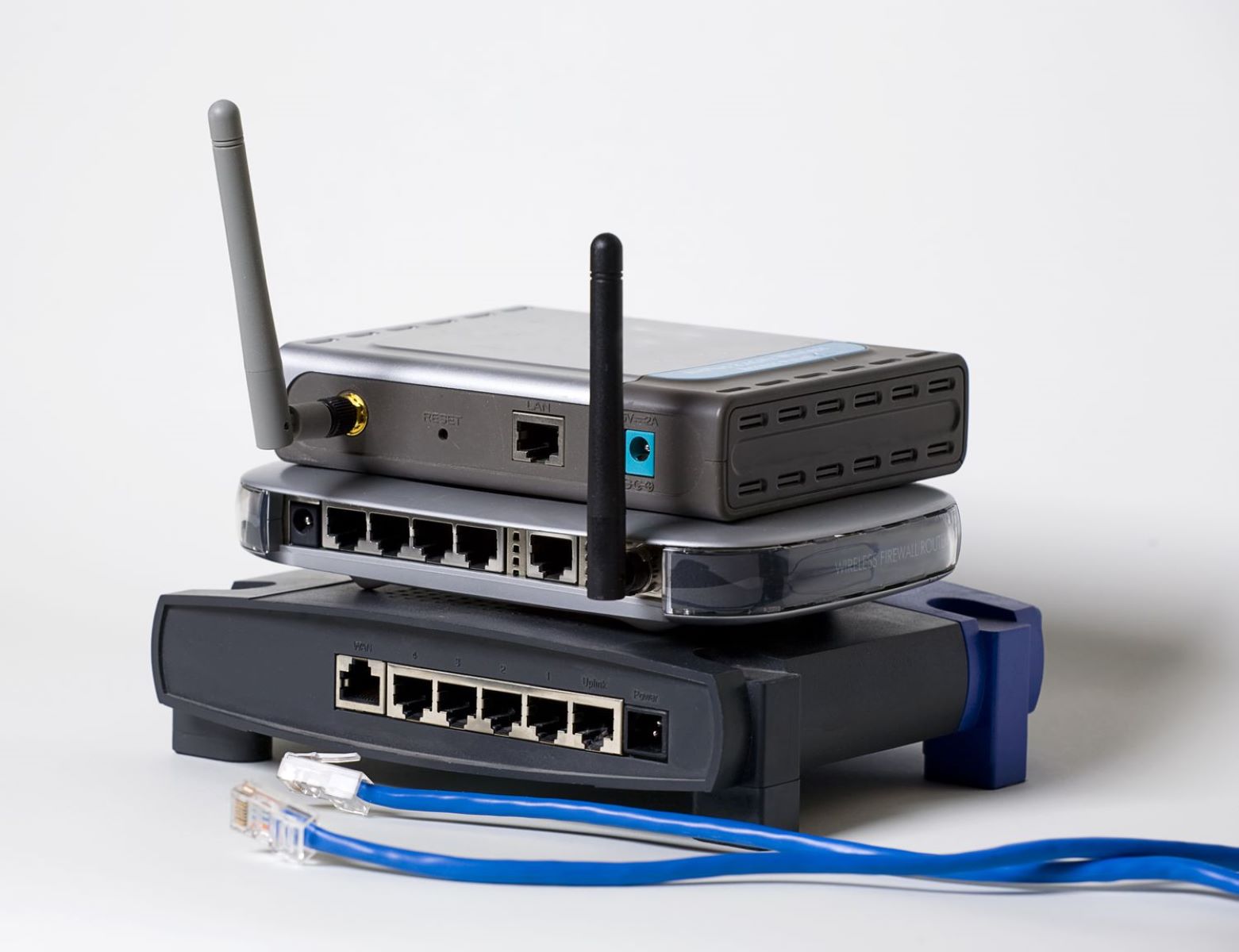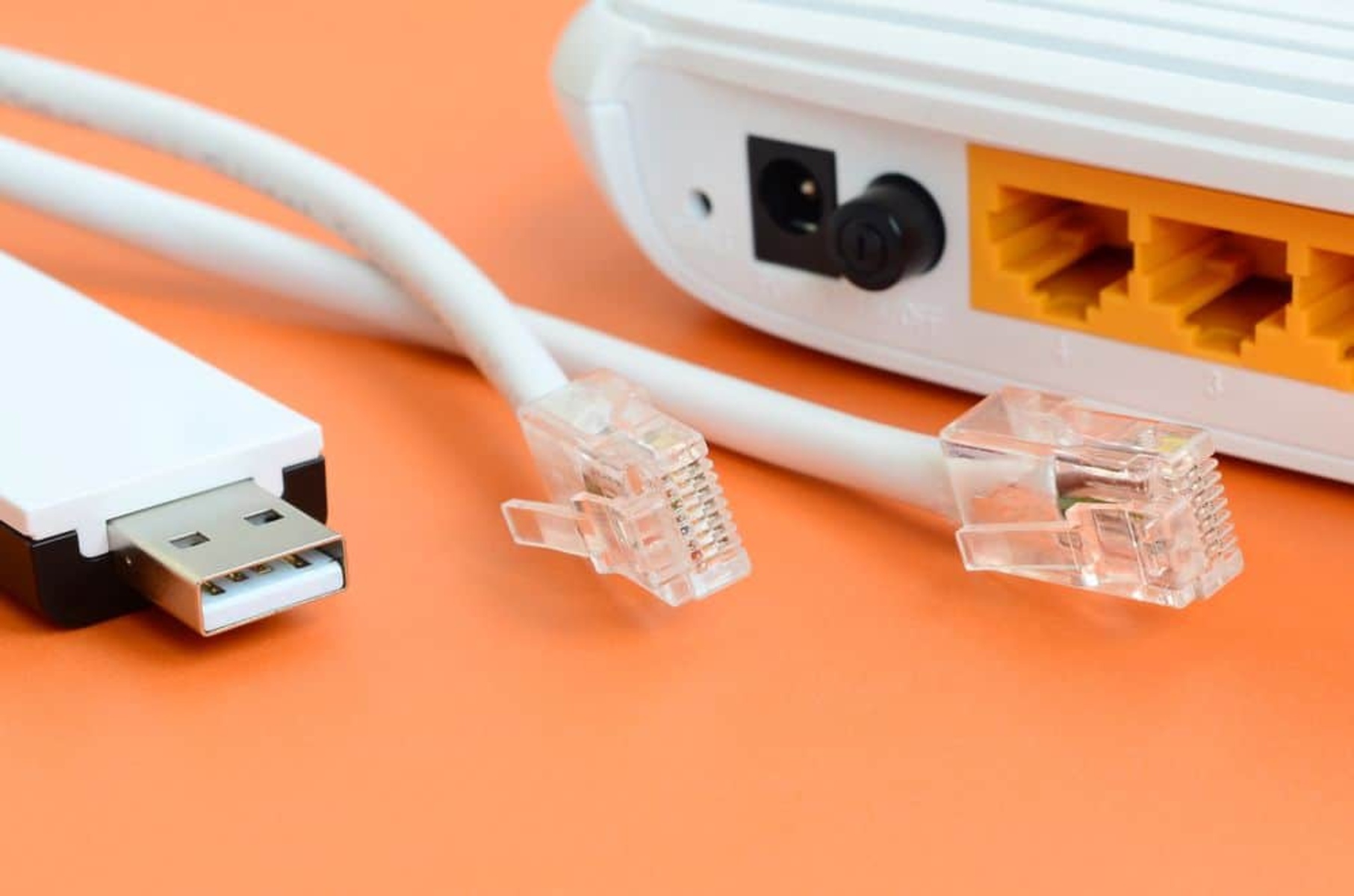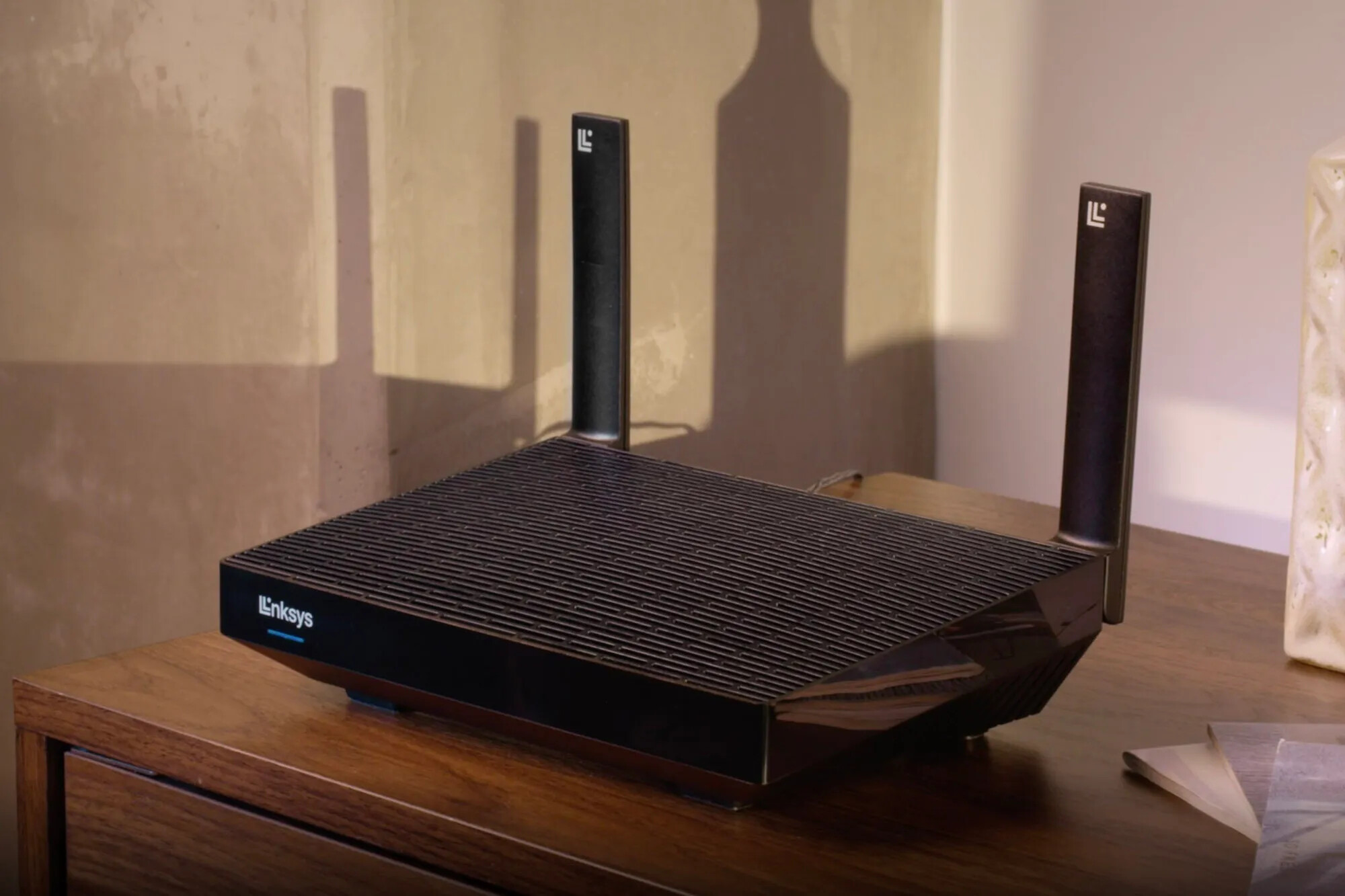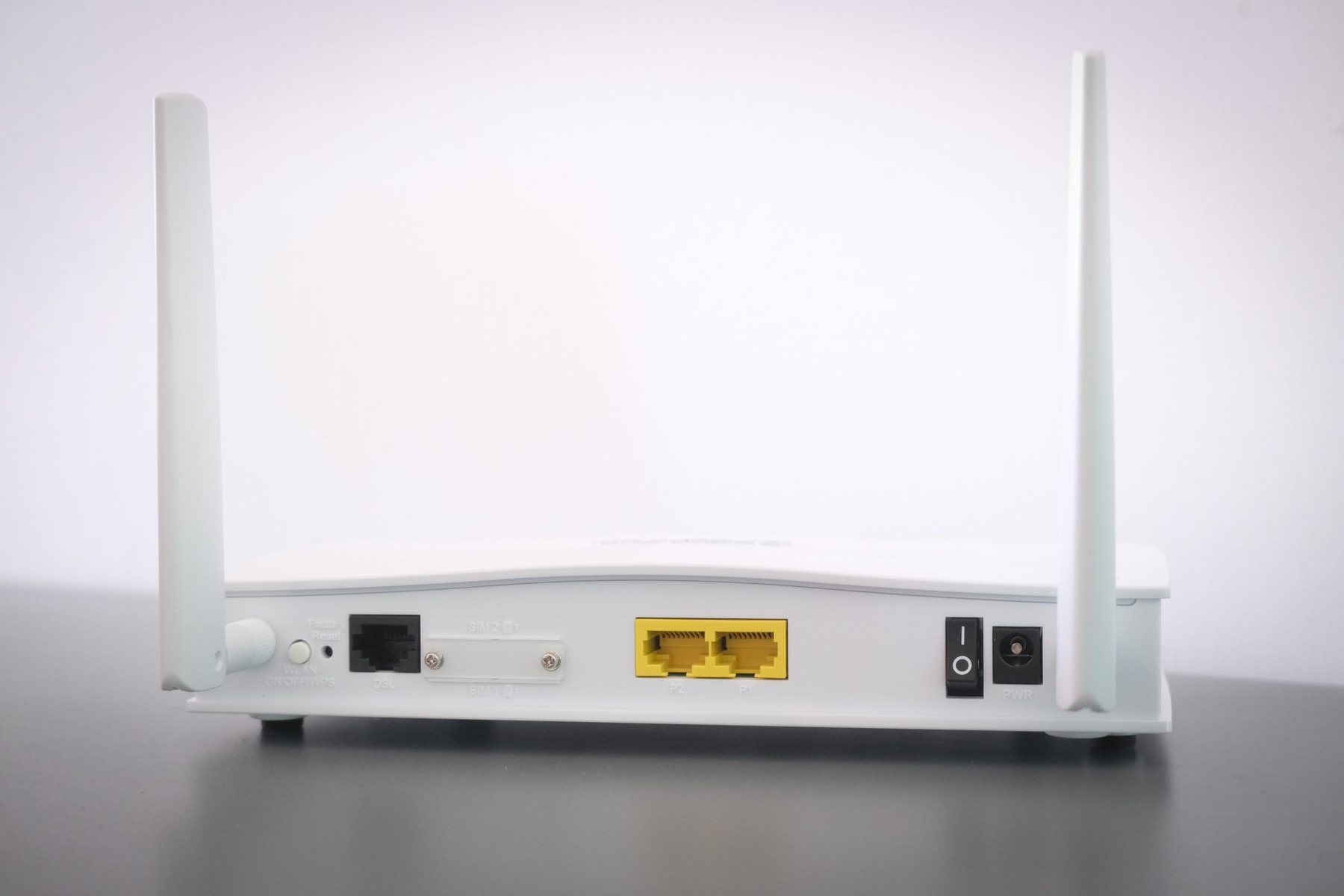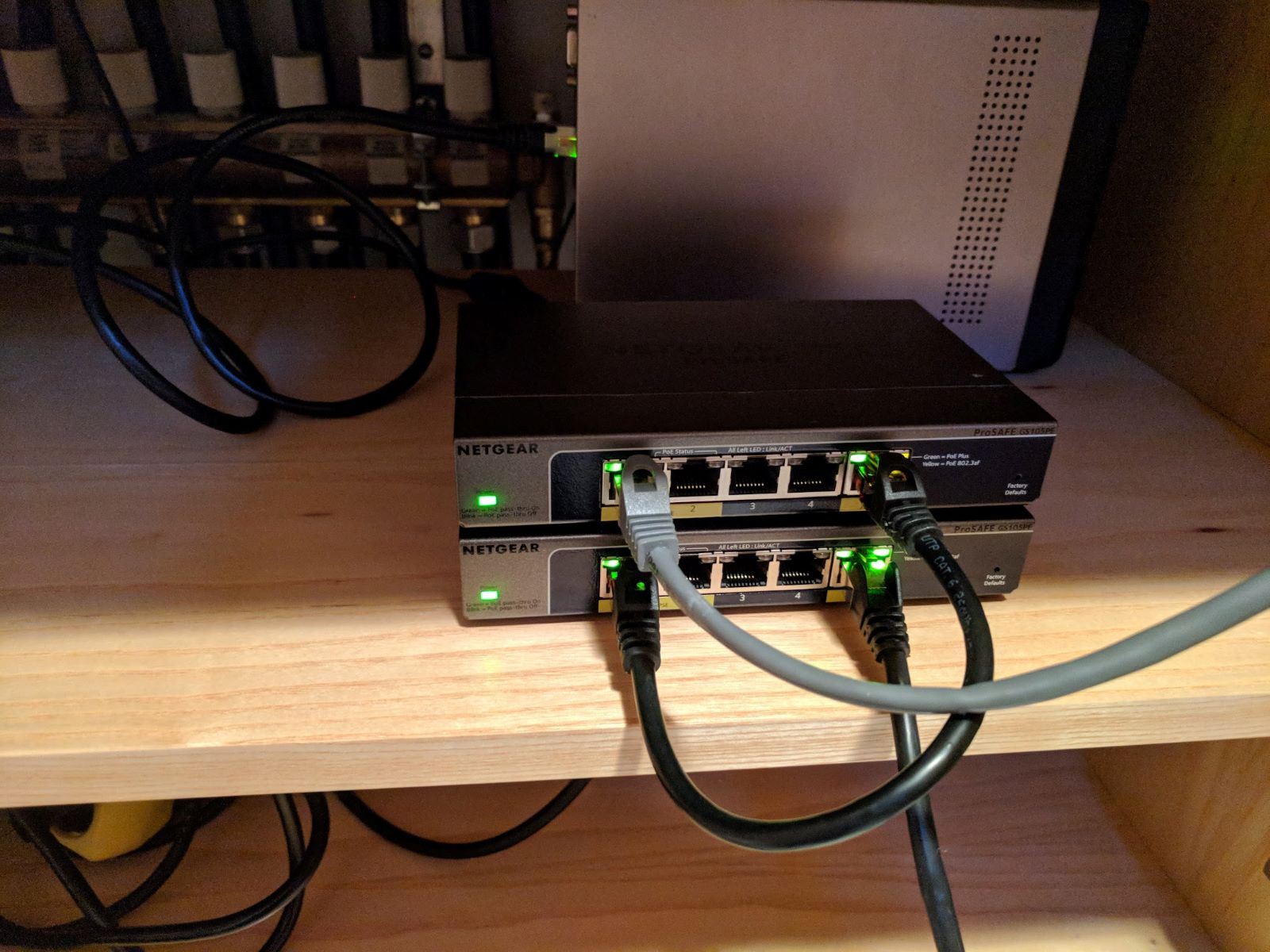Introduction
Welcome to the world of wireless connectivity, where staying connected is more important than ever. Whether you are working from home, streaming your favorite shows, or simply browsing the internet, having a reliable and fast internet connection is a necessity. However, there are times when the Wi-Fi signals from your router might not reach every corner of your home or office, leading to dead spots where the connection is slow or non-existent. This is where a wireless router extender comes to the rescue!
A wireless router extender, also known as a Wi-Fi range extender or a wireless repeater, is a device that amplifies and extends the Wi-Fi signals from your router to reach areas that would otherwise have a weak or no signal. It acts as a bridge between your router and the devices that are farther away, allowing you to enjoy a strong and stable internet connection throughout your space.
So, how does a wireless router extender work? Simply put, it receives the Wi-Fi signals from your existing router and retransmits them, effectively increasing the coverage area of your network. It works by creating a new network with its own SSID (network name) and password, but seamlessly connects to your existing network so that all your devices can stay connected without any interruptions.
There are several benefits to using a wireless router extender. Firstly, it eliminates dead spots in your home or office, ensuring that you have a strong Wi-Fi signal no matter where you are. It also improves the speed and stability of your internet connection, allowing for smooth streaming and faster downloads. Additionally, a wireless router extender is easy to set up and does not require any additional wiring – simply plug it into a power outlet, connect it to your existing network, and you’re good to go!
There are different types of wireless router extenders available on the market, each with its own unique features and capabilities. Some extenders function as standalone devices, while others can be integrated into your existing router or operate as mesh systems. The type you choose will depend on your specific needs and the layout of your space.
When choosing a wireless router extender, there are a few key factors to consider. These include the range and coverage area of the extender, the compatibility with your existing router, the number of devices it can support, and any advanced features such as dual-band connectivity or beamforming technology. Taking these factors into consideration will help ensure that you select the right extender for your needs.
What is a Wireless Router Extender?
A wireless router extender is a device that enables you to expand the coverage of your Wi-Fi network. It works by receiving the Wi-Fi signals from your existing router and amplifying them, effectively extending the range and reach of your network. This allows you to have a strong and reliable internet connection in areas of your home or office that would otherwise have a weak or no signal.
Think of a wireless router extender as a relay station for your Wi-Fi signals. It picks up the signals transmitted by your router and broadcasts them to areas that are further away, bridging the gap between your router and devices that are out of range. This can help eliminate dead spots and ensure a seamless internet experience throughout your space.
Using a wireless router extender is a cost-effective way to boost the coverage of your Wi-Fi network without the need for additional wiring or installing a new router. It provides a solution for those frustrating moments when you’re trying to use Wi-Fi in the far corners of your home or in areas with obstructions such as thick walls or multiple floors.
Wireless router extenders come with different features and capabilities. Some extenders operate on a single band, typically 2.4GHz, while others offer dual-band functionality, utilizing both 2.4GHz and 5GHz bands for improved performance and reduced interference. Dual-band extenders are particularly useful in crowded Wi-Fi environments where multiple devices are simultaneously connected.
Another type of wireless router extender is a mesh system, which consists of multiple access points or nodes that work together to create a seamless Wi-Fi network. Mesh systems offer better coverage and scalability, making them an ideal choice for larger homes or offices where a single extender may not be sufficient.
Setting up a wireless router extender is generally straightforward. Most extenders come with a user-friendly interface that guides you through the installation process. Typically, you would connect the extender to a power outlet and use a web-based interface or a dedicated mobile app to configure the settings and connect it to your existing network. Once set up, the extender will create a new Wi-Fi network with its own network name (SSID) and password, allowing your devices to seamlessly connect to it.
Overall, a wireless router extender is an essential tool for extending the range and coverage of your Wi-Fi network. It provides a practical solution for overcoming Wi-Fi dead spots and ensures that you can enjoy a strong and reliable internet connection throughout your home or office. Whether you opt for a standalone extender or a mesh system, incorporating a wireless router extender into your network setup can greatly enhance your online experience.
How Does a Wireless Router Extender Work?
A wireless router extender works by receiving the Wi-Fi signals from your existing router and amplifying them, effectively extending the range and coverage area of your network. It acts as a relay between your router and the devices that are located further away, ensuring that they receive a strong and reliable Wi-Fi signal.
When you set up a wireless router extender, it creates a new network with its own network name (SSID) and password. However, it still connects to your existing router’s network, allowing your devices to seamlessly transition between the extender and the router without any manual switching required.
To understand how a wireless router extender works, let’s break down the process into a few simple steps:
- Signal Reception: The extender receives the Wi-Fi signals transmitted by your router. It has built-in antennas that are designed to capture and pick up these signals.
- Signal Amplification: Once the extender receives the signals, it amplifies them to boost the Wi-Fi coverage area. This enables the signals to reach areas that are farther away from the router, such as rooms on different floors or outdoor spaces.
- Signal Re-Transmission: The extender retransmits the amplified signals, effectively creating a new network that devices can connect to. This network has its own network name (SSID) and password, but it is still connected to your existing router’s network.
- Seamless Roaming: As you move around your space, your devices automatically connect to the extender or the router, depending on which network offers the strongest signal. This allows for seamless roaming and uninterrupted internet connectivity.
Wireless router extenders operate on various frequency bands, typically 2.4GHz or 5GHz. Single-band extenders operate on the 2.4GHz band, which offers decent coverage but may be subject to more interference from other wireless devices. Dual-band extenders, on the other hand, operate on both 2.4GHz and 5GHz bands, allowing for better performance and reduced interference in congested Wi-Fi environments.
In addition, some advanced wireless router extenders offer features like beamforming technology. Beamforming allows the extender to focus the Wi-Fi signals towards specific devices, improving the signal strength and coverage in those areas. This can result in better overall performance and enhanced Wi-Fi range.
Overall, a wireless router extender works by capturing, amplifying, and retransmitting Wi-Fi signals, effectively expanding the coverage area of your network. By deploying an extender strategically in your home or office, you can eliminate Wi-Fi dead spots and enjoy a seamless internet experience throughout your space.
Benefits of Using a Wireless Router Extender
Using a wireless router extender offers several benefits that can greatly enhance your Wi-Fi experience. Whether you’re at home or in the office, here are some advantages of incorporating a wireless router extender into your network setup:
- Extended Wi-Fi Range: The primary benefit of a wireless router extender is that it extends the range of your Wi-Fi network. It effectively eliminates dead spots and ensures that you have a strong and reliable internet connection throughout your space, even in areas that were previously out of reach.
- Improved Signal Strength: By amplifying the signals from your existing router, a wireless router extender enhances the signal strength in areas that were experiencing weak or intermittent connectivity. This leads to faster and more stable internet speeds, allowing for seamless streaming, online gaming, and browsing.
- Cost-Effective Solution: A wireless router extender is a cost-effective alternative to installing additional routers or accessing points. It eliminates the need for complex wiring or the purchase of expensive networking equipment. With a single extender, you can significantly expand your Wi-Fi coverage without breaking the bank.
- Easy Setup: Setting up a wireless router extender is generally straightforward and user-friendly. Most devices come with intuitive interfaces and step-by-step instructions, making the installation process hassle-free. You can have your extender up and running in minutes, without the need for technical expertise.
- Seamless Roaming: With a wireless router extender, you can move around your space without experiencing annoying signal drops or disconnections. Your devices seamlessly transition between the extender and the router, ensuring uninterrupted internet connectivity. This is particularly useful for larger homes or offices where you need consistent coverage throughout.
- Flexibility and Scalability: Wireless router extenders offer flexibility and scalability for your network. You can add multiple extenders if needed to cover larger areas or overcome particularly difficult obstacles. In addition, some extenders can be integrated into your existing router to create a mesh network, providing even better coverage and reliability.
- Compatibility with Devices: Wireless router extenders are compatible with all Wi-Fi-enabled devices, including smartphones, tablets, laptops, smart TVs, and gaming consoles. This means that you can enjoy a seamless internet experience on all your devices, regardless of their location within the extended range.
Overall, the benefits of using a wireless router extender are clear. It enhances the range, signal strength, and stability of your Wi-Fi network, making it more convenient and enjoyable to use. Say goodbye to Wi-Fi dead spots and experience a seamless internet connection in every corner of your home or office.
Types of Wireless Router Extenders
Wireless router extenders come in various types, each offering its own unique features and capabilities. Understanding the different types can help you choose the right extender that suits your specific needs and network setup. Here are some common types of wireless router extenders:
- Standalone Extenders: Standalone wireless router extenders are the most basic type. They function as separate devices that receive and amplify Wi-Fi signals, extending the coverage area of your network. Standalone extenders typically have their own network name (SSID) and password, creating a separate Wi-Fi network. They are easy to set up and can be placed anywhere within the range of your existing router.
- Integrated Extenders: Integrated wireless router extenders, also known as router/extender combos, are devices that combine the functionality of a router and an extender in one unit. These devices eliminate the need for multiple devices and offer a more streamlined network setup. Integrated extenders work by connecting directly to your existing router, extending its range and coverage area seamlessly. They provide a convenient all-in-one solution for improving your Wi-Fi network.
- Mesh Systems: Mesh systems consist of multiple access points or nodes that work together to create a seamless Wi-Fi network. Each node serves as an extender, relaying the signals to provide a consistent and uninterrupted Wi-Fi connection throughout your home or office. Mesh systems are highly scalable and offer superior coverage compared to standalone or integrated extenders. They are ideal for larger spaces or areas with multiple floors, where a single extender may not provide sufficient coverage.
- Powerline Extenders: Powerline extenders use the electrical wiring in your home or office to extend the Wi-Fi coverage. These devices typically come in a kit with two adapters – one that connects to your router and another that plugs into an electrical outlet in the area where you want to extend your Wi-Fi. Powerline extenders are a good option when the distance between your router and the desired coverage area is too far for traditional wireless extenders to reach effectively. They provide a stable and reliable connection by utilizing the electrical wiring infrastructure.
Each type of wireless router extender has its own advantages and considerations. Standalone extenders are easy to set up and provide flexibility, while integrated extenders offer convenience by combining the functionality of a router and an extender. Mesh systems provide excellent coverage and scalability, while powerline extenders are useful when dealing with challenging Wi-Fi environments. Consider your specific needs, budget, and the layout of your space when choosing the right type of wireless router extender for your network.
Factors to Consider When Choosing a Wireless Router Extender
Choosing the right wireless router extender is crucial in ensuring optimal coverage and performance for your Wi-Fi network. Here are some key factors to consider when selecting a wireless router extender:
- Range and Coverage: One of the most important factors to consider is the range and coverage area of the extender. Evaluate the size of your space and determine how far the extender needs to reach to eliminate any Wi-Fi dead spots. Look for extenders with a sufficient coverage range to ensure that all areas of your home or office receive a strong and reliable signal.
- Compatibility: Ensure that the wireless router extender you choose is compatible with your existing router. Check for compatibility with the Wi-Fi standards of your router, such as 802.11ac or 802.11n. Compatibility ensures that the extender can seamlessly connect to your router’s network and provide optimal performance.
- Wi-Fi Band: Consider whether you need a single-band or dual-band extender. Single-band extenders operate on the 2.4GHz frequency, while dual-band extenders support both 2.4GHz and 5GHz bands. Dual-band extenders offer better performance in congested Wi-Fi environments and can provide faster speeds and reduced interference.
- Number of Devices Supported: Check the maximum number of devices that the extender can support. If you have a large number of devices connected to your network, ensure that the extender can handle the capacity without diminishing the performance.
- Advanced Features: Consider if there are any advanced features you require, such as beamforming technology, which helps focus the Wi-Fi signals towards specific devices for improved performance. Other features to look out for include MU-MIMO (Multi-User, Multiple-Input, Multiple-Output) support, which allows for simultaneous connections and better efficiency.
- Ease of Setup: Evaluate the ease of installation and setup procedures for the wireless router extender. Look for devices that provide a user-friendly interface and offer clear instructions. Some extenders can be set up using a web-based interface, while others may have a dedicated mobile app for ease of configuration.
- Brand Reputation and Reviews: Research the reputation of the brand and read customer reviews of the wireless router extender. This will give you insights into the reliability and performance of the device, helping you make an informed decision.
By considering these factors, you can select a wireless router extender that best suits your needs and provides optimal coverage and performance for your Wi-Fi network. Take the time to evaluate your specific requirements and compare different extenders to make an educated choice.
Setting Up a Wireless Router Extender
Setting up a wireless router extender is a straightforward process that can be done in a few simple steps. Here is a general guide on how to set up a wireless router extender:
- Select the Right Location: Choose a location for your wireless router extender that is within the range of your existing router’s Wi-Fi signal. It should be placed in an area that can effectively reach the areas where you need to extend coverage.
- Power On the Extender: Plug the extender into a power outlet near your router. Ensure that the power outlet is easily accessible and not blocked by furniture or other objects.
- Connect to the Extender: Use a computer or mobile device to connect to the wireless network of the extender. The network name (SSID) and password for the extender can usually be found on the device or in the user manual.
- Access the Extender’s Web Interface: Open a web browser on your connected device and enter the default IP address or URL provided by the extender’s manufacturer. This will take you to the web interface of the extender.
- Configure the Extender: Follow the on-screen instructions in the web interface to configure the extender. You may need to select your existing router’s Wi-Fi network and enter the password to establish a connection between the extender and the router.
- Customize the Extender Settings: Once the extender is connected to your router’s network, you can customize additional settings, such as the network name (SSID) and password for the extended Wi-Fi network. You can also set up any advanced features or security settings provided by the extender.
- Test the Extended Network: After setting up the extender, move to the areas where you previously experienced weak or no Wi-Fi signal. Ensure that your devices are connecting to the extended Wi-Fi network and that you have a strong and stable internet connection in those areas.
It is important to note that the specific steps for setting up a wireless router extender may vary depending on the brand and model you have chosen. Always refer to the user manual or documentation provided by the manufacturer for detailed instructions specific to your extender.
Should you encounter any issues during the setup process, refer to the troubleshooting section in the user manual or consult the manufacturer’s support resources. They can provide additional guidance to resolve any connectivity or configuration problems you may face.
By following these steps and ensuring that the wireless router extender is properly configured, you will be able to extend the range and coverage of your Wi-Fi network, providing a strong and reliable internet connection throughout your home or office.
Troubleshooting Common Issues with a Wireless Router Extender
While wireless router extenders are designed to enhance Wi-Fi coverage and performance, occasionally, you may encounter some common issues. Here are some troubleshooting tips to help you resolve these problems:
- Slow or Intermittent Connection: If you experience a slow or intermittent connection with your wireless router extender, try positioning the extender closer to your router. This will ensure a stronger signal and better performance. Additionally, check for any potential sources of interference, such as other electronic devices or neighboring Wi-Fi networks, and adjust the Wi-Fi channel settings on your router and extender to minimize interference.
- Incorrect Placement: Improper placement of the extender can also lead to connectivity issues. Ensure that the extender is not obstructed by walls, furniture, or other objects that could block the Wi-Fi signals. Experiment with different placement options to find the optimal position that provides the best coverage and performance.
- Incompatibility with Router: If you are experiencing compatibility issues between your wireless router and extender, ensure that both devices support the same Wi-Fi standards (e.g., 802.11ac or 802.11n) and are on the latest firmware versions. If compatibility problems persist, consider upgrading your router or extender to ensure better compatibility between the two.
- Weaker Extended Network: If you notice that the extended network from the wireless router extender is weaker than expected, try adjusting the position or orientation of the extender’s antennas. In some cases, relocating the extender to a different area may also help improve the signal strength and coverage of the extended network.
- Authentication Errors: If you encounter authentication errors when connecting to the extended Wi-Fi network, verify that you are entering the correct password. Ensure that you are connecting to the correct network name (SSID) associated with the extender and that the password is entered accurately. You may also try resetting the extender and reconfiguring it to resolve any authentication issues.
- Device Connectivity Issues: If specific devices are having trouble connecting to the extended network, ensure that those devices are within the range of the extender and have the correct security credentials entered. Restarting the devices or updating their Wi-Fi drivers may also help resolve connectivity problems.
- Resetting the Extender: If all else fails, you can try resetting the wireless router extender to its factory default settings. This can be done by pressing the reset button on the device or through the web interface. Keep in mind that performing a reset will erase all custom configurations and settings, requiring you to set up the extender again from scratch.
If you continue to experience issues with your wireless router extender, consult the troubleshooting section of the user manual or contact the manufacturer’s support for further assistance. They may have additional troubleshooting steps or firmware updates available to address the specific issue you are facing.
By following these troubleshooting tips, you can overcome common issues and ensure that your wireless router extender provides a reliable and extended Wi-Fi network throughout your home or office.
Conclusion
A wireless router extender is a valuable tool for extending the range and coverage of your Wi-Fi network. It allows you to eliminate Wi-Fi dead spots and enjoy a strong and reliable internet connection throughout your home or office. By amplifying and extending the Wi-Fi signals from your existing router, a wireless router extender ensures that you can connect to the internet seamlessly from any corner of your space.
When choosing a wireless router extender, consider factors such as range and coverage, compatibility with your existing router, Wi-Fi band support, the number of devices it can handle, and any advanced features you might require. This will help you select the right extender to meet your specific needs and ensure optimal performance.
Setting up a wireless router extender is typically a straightforward process that involves connecting the extender to a power outlet, accessing the device’s web interface, and following simple configuration steps. With proper placement and configuration, you can enhance the coverage and signal strength of your Wi-Fi network in just a few minutes.
In the event of any issues, troubleshoot common problems such as slow or intermittent connections, incorrect placement, compatibility concerns, weaker extended network signals, authentication errors, device connectivity issues, or performing a reset if necessary. These troubleshooting steps can help resolve issues and ensure a smooth and reliable Wi-Fi experience with your wireless router extender.
With the increased demand for reliable Wi-Fi connectivity in our daily lives, a wireless router extender provides a cost-effective solution to extend the reach of your network. It is a valuable tool that allows you to enjoy seamless internet browsing, streaming, online gaming, and other online activities wherever you are within your home or office.
Whether you opt for a standalone extender, an integrated extender, a mesh system, or a powerline extender, incorporating a wireless router extender into your network setup can significantly enhance your Wi-Fi coverage, performance, and overall internet experience.







